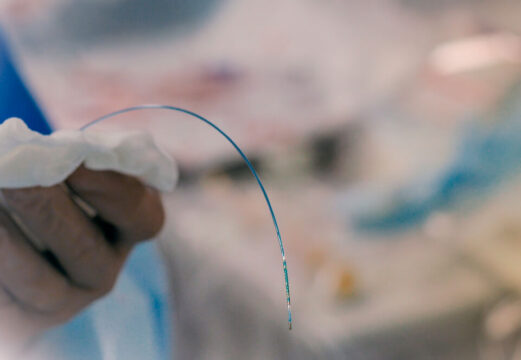At present, the use of drug coated balloons (DCB) in femoropopliteal territory is more and more frequent. However, when it comes to treating moderate to severe calcification, the evidence is still limited.

Using a peripheral artery calcification scoring system (PACSS) has been associated to clinical outcomes after DCB angioplasty for femoropopliteal lesions.
The system categorizes lesions into 5 grades (Grade 0: no visible calcification of the target lesion; Grade 1: unilateral wall calcification < 5 cm; Grade 2: unilateral calcification ≥ 5 cm; Grade 3 bilateral wall calcification < 5 cm; Grade 4 bilateral calcification ≥ 5 cm).
The aim of this retrospective study was to assess the link between PACSS score severity and clinical outcomes after DCB in femoropopliteal territory.
Primary end point was primary patency at one year.
Read also: Is IVUS Useful in Lower Limb PCI?
The study looked at 626 patients with intermittent claudication undergoing DCB angioplasty in de novo femoropopliteal lesions between 2017 and 2021 in Japan. Mean age was 74 and patients were mostly men. The most frequent clinical presentation across all grades was Rutherford 3.
Distribution according to PACSS was: grade 0 in 38%, grade 1 in 17%, grade 2 in 7%, grade 3 in 16%, and grade 4 in 23% of cases. 1-year primary patency rates were 88%, 89%, 71%, 96%, and 82%, respectively (p < 0.001). PACSS grade 4 was significantly associated with increased risk of restenosis (HR: 1.82, 95% CI 1.15-2.87, p = 0.010).
Conclusion
PACSS grade 4, bilateral calcification > 5 cm, was significantly associated to worse clinical outcomes after angioplasty with DCB in femoropopliteal lesions.

Dr. Carlos Fava.
Member of the Editorial Board of SOLACI.org.
Reference: Shinsuke Mori MD et al Catheter Cardiovasc Interv. 2023;101:892–899.
Subscribe to our weekly newsletter
Get the latest scientific articles on interventional cardiology





